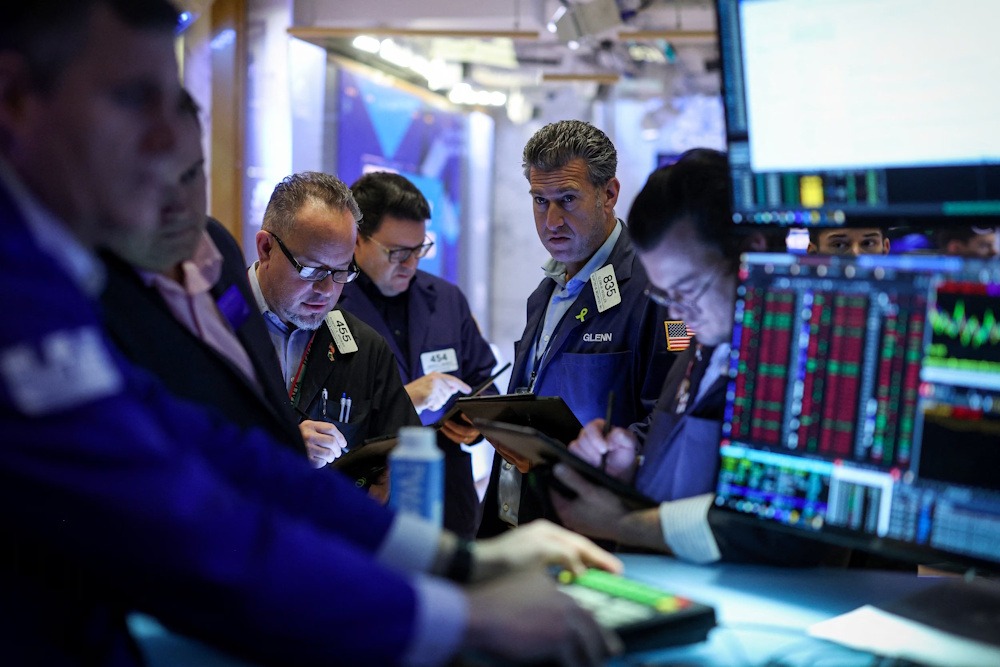
The tech-heavy Nasdaq Composite increased by 68.86 points, representing a 0.3% rise, concluding the session at 22,660.01. The S&P 500 increased by 27.25 points, representing a 0.4% rise, concluding the session at 6,688.46. Seven of the 11 broad sectors of the benchmark index finished the day with gains. The Health Care Select Sector SPDR advanced by 2.4%, followed by the Industrials Select Sector SPDR with a gain of 0.8%, and the Technology Select Sector SPDR, which increased by 0.6%. In contrast, the Energy Select Sector SPDR experienced a decline of 1.1%. The CBOE Volatility Index, often referred to as the fear gauge, experienced a 1% rise, reaching a level of 16.28. On Tuesday, trading volume reached 18.56 billion shares, surpassing the 20-session average of 18.38 billion shares. On the NYSE, advancers surpassed decliners with a ratio of 1.27-to-1, whereas on the Nasdaq, declining issues outnumbered advancing ones at a ratio of 1.02-to-1.
Market achieved gains on Tuesday, despite investors maintaining a vigilant watch on Washington, where the specter of a federal government shutdown was prominently present. The potential lapse in funding, which would disrupt non-essential government operations, has generated concern among market participants, prompting inquiries into the wider economic and financial ramifications should lawmakers be unable to secure an agreement. A prolonged shutdown could undermine consumer confidence, impede government spending, and exert a temporary drag on GDP; however, historical trends indicate that markets tend to rebound swiftly once funding is reinstated. In spite of prevailing concerns, equities experienced an upswing as market participants focused on factors extending beyond immediate political disputes. Numerous traders seemed to wager that, should a shutdown occur, its economic ramifications would probably be constrained in comparison to other challenges, including inflationary pressures and the trajectory of the Fed’s interest rates. Past shutdowns have led to disruptions; however, markets frequently interpret them as political theater instead of a fundamental risk.
The health care sector experienced an uptick on Tuesday as investors gravitated towards defensive strategies in light of the prevailing uncertainty surrounding a potential government shutdown. Health care stocks are frequently regarded as more secure investments in times of political and economic uncertainty, due to the sector’s consistent demand and its ability to withstand cyclical declines. Furthermore, the prevailing optimism surrounding pharmaceutical and biotech firms contributed to an uplift in sentiment, as numerous companies reaped the rewards of favorable trial results and regulatory advancements. Additionally, President Trump announced plans to reduce the cost of all prescription drugs under the Medicaid program for low-income Americans. Trump stated that he would implement new medications at a “most favored nation” price in exchange for tariff relief. He noted his anticipation that additional pharmaceutical companies will implement comparable strategies, which subsequently enhanced the performance of healthcare stocks.
According to data, Case-Shiller Home Prices for the 10-City Composite experienced a decline of 0.3% in July, following a decrease of 0.1% in June. In July, the 20-City Composite experienced a decrease of 0.3%, following a decline of less than 1% in June. According to the reports, the Consumer Confidence index for September registered at 94.2. The August figure was adjusted upward to 97.8, an increase from the earlier reported 97.4.
